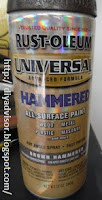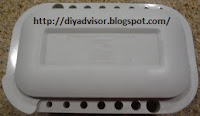By Gary Boutin
Tools and Supplies
Ballast: Glass marbles, sand or rocks
Black Spray Paint
Electric or Cordless drill plus bit
Marbles
Ruler
Soldering Iron and Conical Tip
Mountain High Yoghurt Plastic Container
I am always looking for way to hold my artist brushes without spending a ton of money on art equipment. This post will give you another alternative to my first post named
Home Made brush Holder with all Plastic Parts. This container will hold your brushes safe and usable for storing. My
first post was meant only to store your brushes, but soon realized that most people would not have all the items. The best part is the container is free if you eat yoghurt.
This is an upcycling project. Be part of this new trend.
This post shows the seven steps to use a plastic yogurt container with marbles to hold and store clean brushes.
Step 1: Fig.1 above shows that the use of a clean
Mountain High Yoghurt Plastic Container and place a
ruler on the top.
Fig.2 shows the
permanent marker lines that will help decided were the holes will be placed on the top of the lid of the container.
Fig.3 shows a
permanent ink pen is needed to place the lines on the plastic lid.
Fig.4 shows a standard
ruler is needed to make straight lines.
 |
| Fig.2 Put line on lid |
 |
| Fig.3 Permanent marking pen |
 |
| Fig.4 Ruler |
Step 2: Fig.5 show glass ball Ballasts: This container is to tall to take on a lot of brushes by itself. By adding ballast like
glass marbles, or sand the container will hold itself without falling over every time when brushes are placed on top of the container.
 |
| Fig.5 Marbles |
Step 3: Now the holes for the top can be drilled with a
electric drill. In this post a
soldering Iron with a
conical tip was used to create the holes in the top of the plastic lid. Just using the tip does not work, the full conical tip needs to be used to make a sizeable hole for a brush.
Fig.6 shows a
UTC-100 Ungar soldering iron sells about
$30 on the Internet.
Fig.7 shows that this one has variable heat tips and has a conical tip for the job. It took less than one minute to get all the holes in this lid.
Far faster than any electric or cordless drill and done safely.
Fig.8 shows the iron is set at 750 which took one minute to do the job.
 |
| Fig.6 Ungar soldering iron |
 |
| Fig.7 Lid ready for puncture |
 |
| Fig.8 iron set at 750 |
Step 4: Fig.9 and
fig.10 shows a
conical tip that will be used to place the holes into the
yoghurt lid.
 |
| Fig.9 Close-up |
 |
Fig.10
Conical tip |
Step 5: Fig.11 and
fig.12 shows the lines are in place and the soldering conical tip is placing holes in the lid.
 |
| Fig.11 Draw lines |
 |
| Fig.12 Close up |
Step 6: This is an inverted (inside) look at the holes for the brushes.
Fig.13 and
fig.14 shows the lid has been spray painted black.
 |
| Fig.13 Inverted lid |
 |
| Fig.14 Top of lid |
Step 7: Fig.15 shows the brushes have been added to the lid. Fits the holes just right.
Fig.16 shows the job is finished and these brushes are ready for use.
Hope you had fun making this brush holder.
 |
| Fig.15 Brushes |
 |
| Fig.16 Job finished |
Other post that are brush containers:
Home Made brush Holder with all Plastic Parts:
- Cookie Alert: European Union laws requires that you know that this blog uses cookies. If you are concerned about this please click here to see how Google uses this information.
Note: Light in Dark Artwork assumes no liability for omissions, errors or the outcome of any Artist projects. All rights reserved. © Copyright 2011-















































